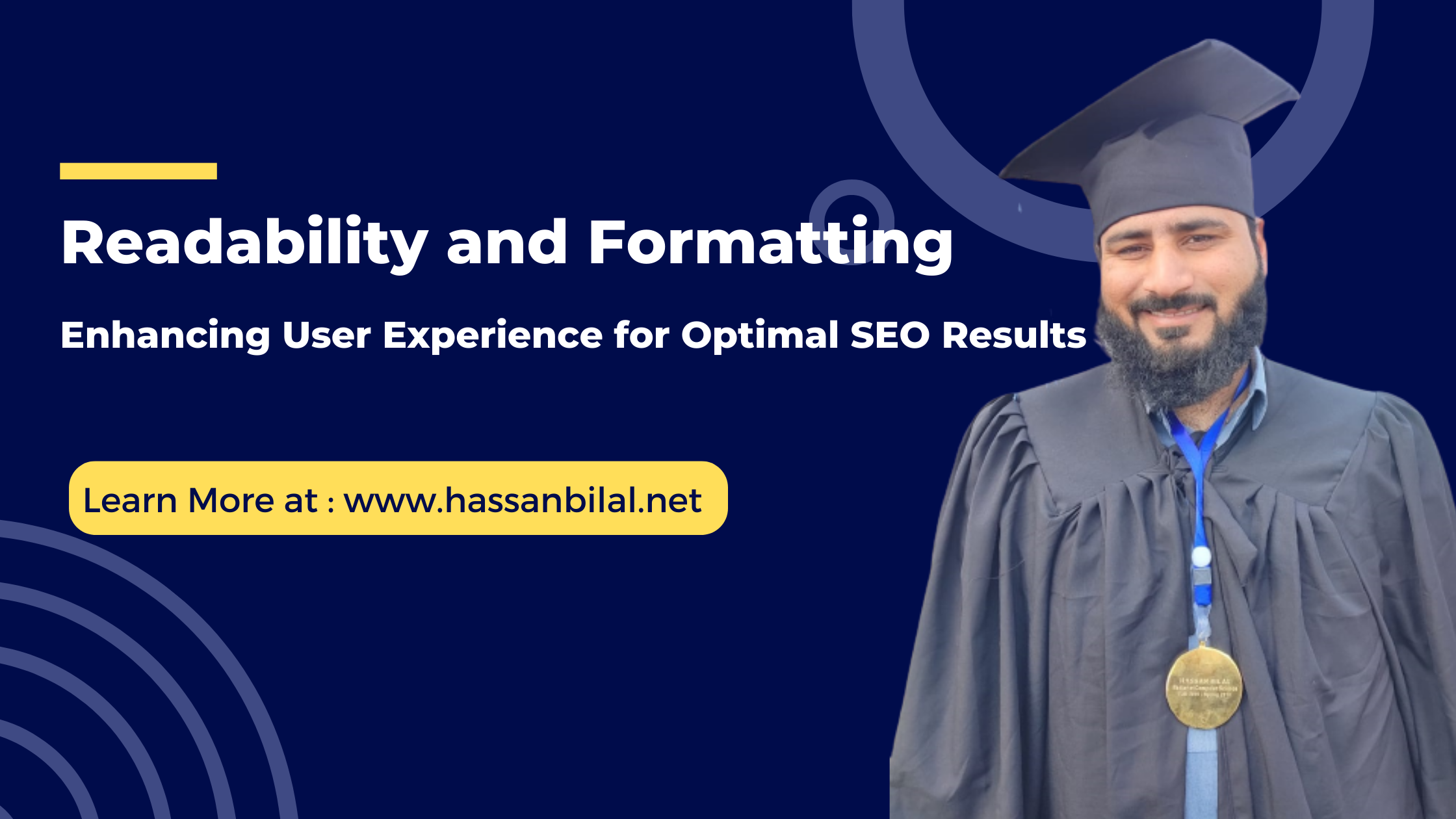Search Engine Optimization & Marketing
Readability and Formatting: Enhancing User Experience for Optimal SEO Results

Readability and Formatting refer to the techniques and strategies employed to structure and present content in a clear, organized, and user-friendly manner. In this comprehensive blog post, we will delve into the significance of Readability and Formatting, their impact on SEO, and the best practices to optimize your content for enhanced readability and user engagement.
The Significance of Readability and Formatting
User Engagement and Retention
Readability and Formatting are instrumental in fostering user engagement and increasing website retention. When your content is easily readable, well-structured, and visually appealing, it captivates users’ attention and encourages them to delve deeper into your website. This leads to longer session durations, reduced bounce rates, and higher conversion rates.
Accessibility and Inclusivity
Optimizing Readability and Formatting ensures that your content is accessible to a diverse range of users, including those with visual impairments, cognitive disabilities, or language barriers. By implementing clear headings, concise paragraphs, appropriate font sizes, and accessibility features, you make your content inclusive and user-friendly. This commitment to accessibility not only enhances user satisfaction but also aligns with web accessibility guidelines and regulations.
SEO and Search Engine Rankings
Search engines, such as Google, prioritize user experience when determining search rankings. Well-structured, readable content is more likely to be favored by search engines, as it aligns with their goal of providing the most relevant and user-friendly results. By optimizing Readability and Formatting, you increase the chances of your content being discovered, indexed, and ranked higher in search engine results pages (SERPs).
Best Practices for Optimizing Readability and Formatting
Strategic Use of Headers and Subheaders
Headers and subheaders play a crucial role in structuring your content and guiding readers through your article. Utilize heading tags (H1, H2, H3, etc.) to create a clear hierarchy of information. Place your target keywords strategically within these headings, as search engines assign more weight to them. This helps both users and search engines understand the main topics covered in your content.
Craft Concise and Scannable Paragraphs
In today’s fast-paced digital world, users tend to skim through content rather than reading it in its entirety. To accommodate this behavior, break your content into short, concise paragraphs that are easily scannable. Aim for 2-3 sentences per paragraph, and use subheadings and bullet points to highlight key information. This approach improves readability and encourages users to engage with your content.
Utilize Bullet Points and Numbered Lists
Bullet points and numbered lists are effective tools for presenting information in a concise and organized manner. Break down complex concepts into digestible chunks using bullet points or numbered lists. This formatting technique allows readers to grasp key points quickly, encourages engagement, and improves the overall user experience.
Optimize Font Styles and Sizes
Font style and size significantly impact the readability of your content. Choose a legible font, preferably a sans-serif typeface, for online content. Sans-serif fonts are easier to read on digital screens due to their clean and simple design. Additionally, ensure that the font size is large enough for effortless reading, particularly on mobile devices. Strive for a balance between legibility and aesthetic appeal.
Incorporate Ample White Space and Visual Elements
White space, also known as negative space, refers to the empty space between paragraphs, images, and other elements on a page. Integrate sufficient white space to improve the clarity and visual appeal of your content. This helps readers focus on the text and reduces visual clutter. Additionally, include relevant visual elements such as images, infographics, or videos to enhance the user experience and convey information more effectively.
Ensure Responsiveness and Mobile Optimization
With the increasing use of mobile devices, it is imperative to optimize your content for mobile viewing. Responsive design ensures that your content adapts seamlessly to different screen sizes and resolutions, enhancing the user experience across all devices. Implement responsive layouts and test your content on various devices to guarantee optimal readability and formatting.
Conclusion
Readability and Formatting are indispensable elements in optimizing content for a superior user experience and improved search engine rankings. By implementing strategic headers, concise paragraphs, bullet points, and appropriate font styles, you can enhance the readability and engagement of your content. Remember to incorporate white space and visual elements to create a visually appealing layout. By prioritizing Readability and Formatting, you can achieve optimal SEO results, increase user satisfaction, and propel your website to new heights.
